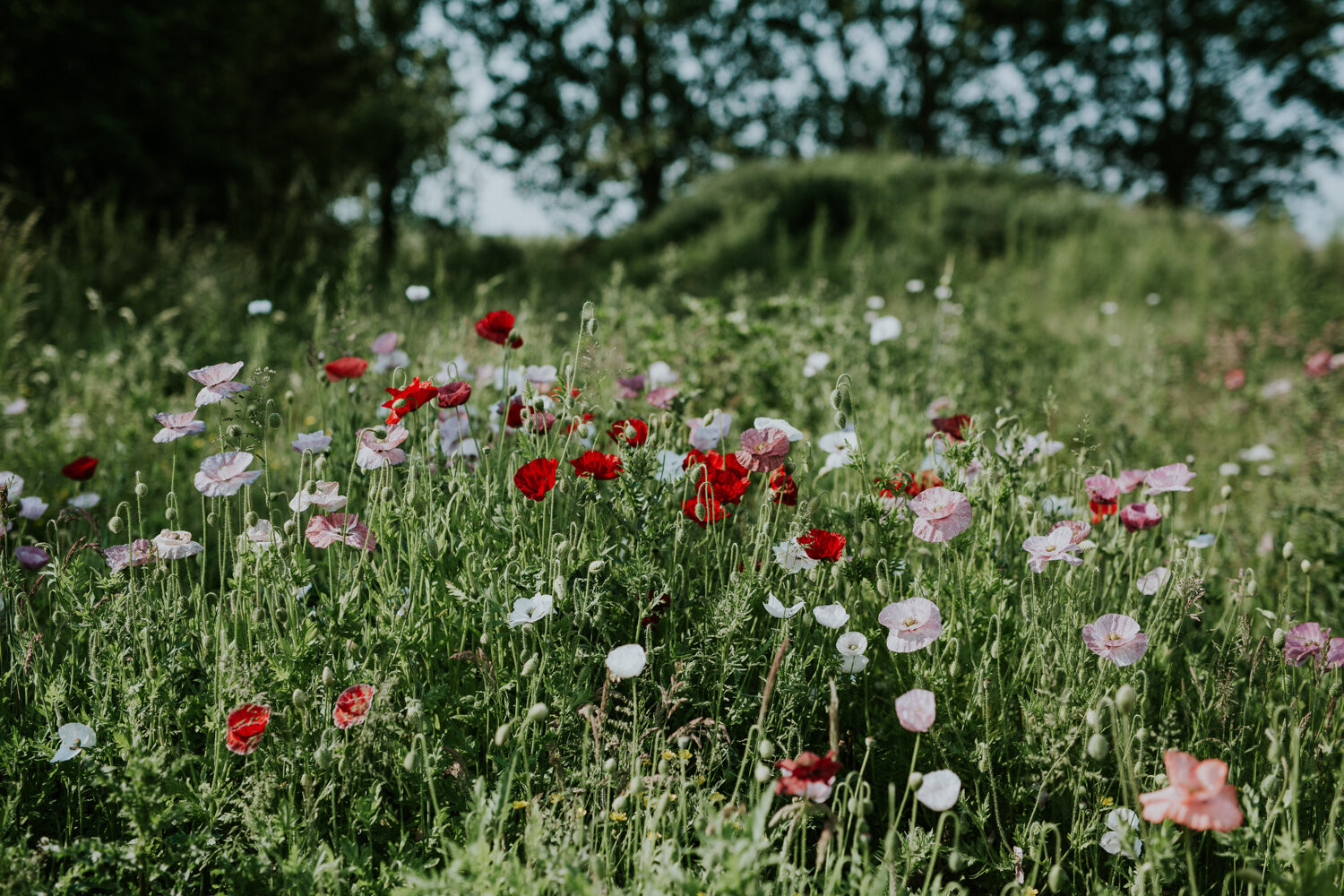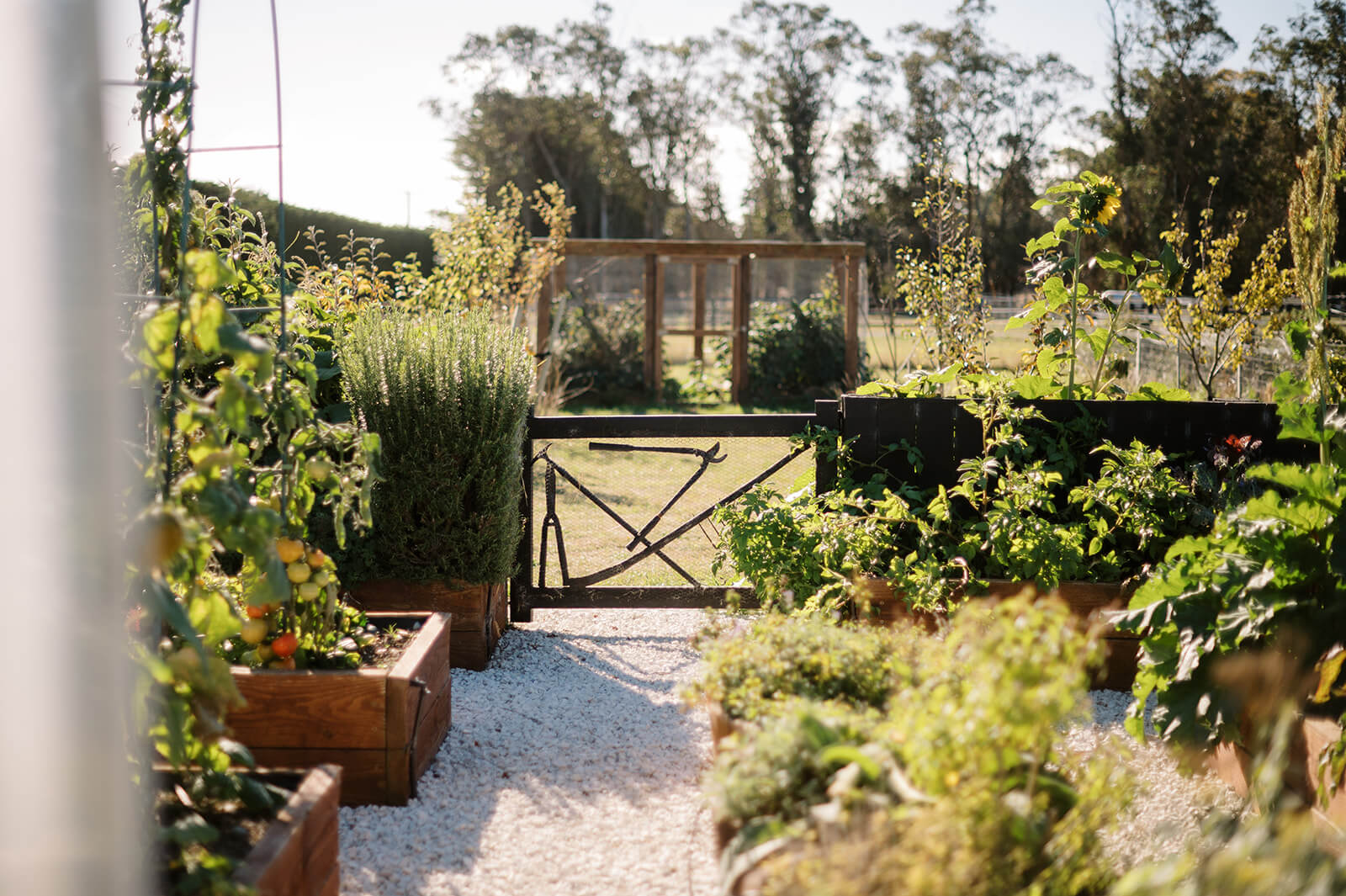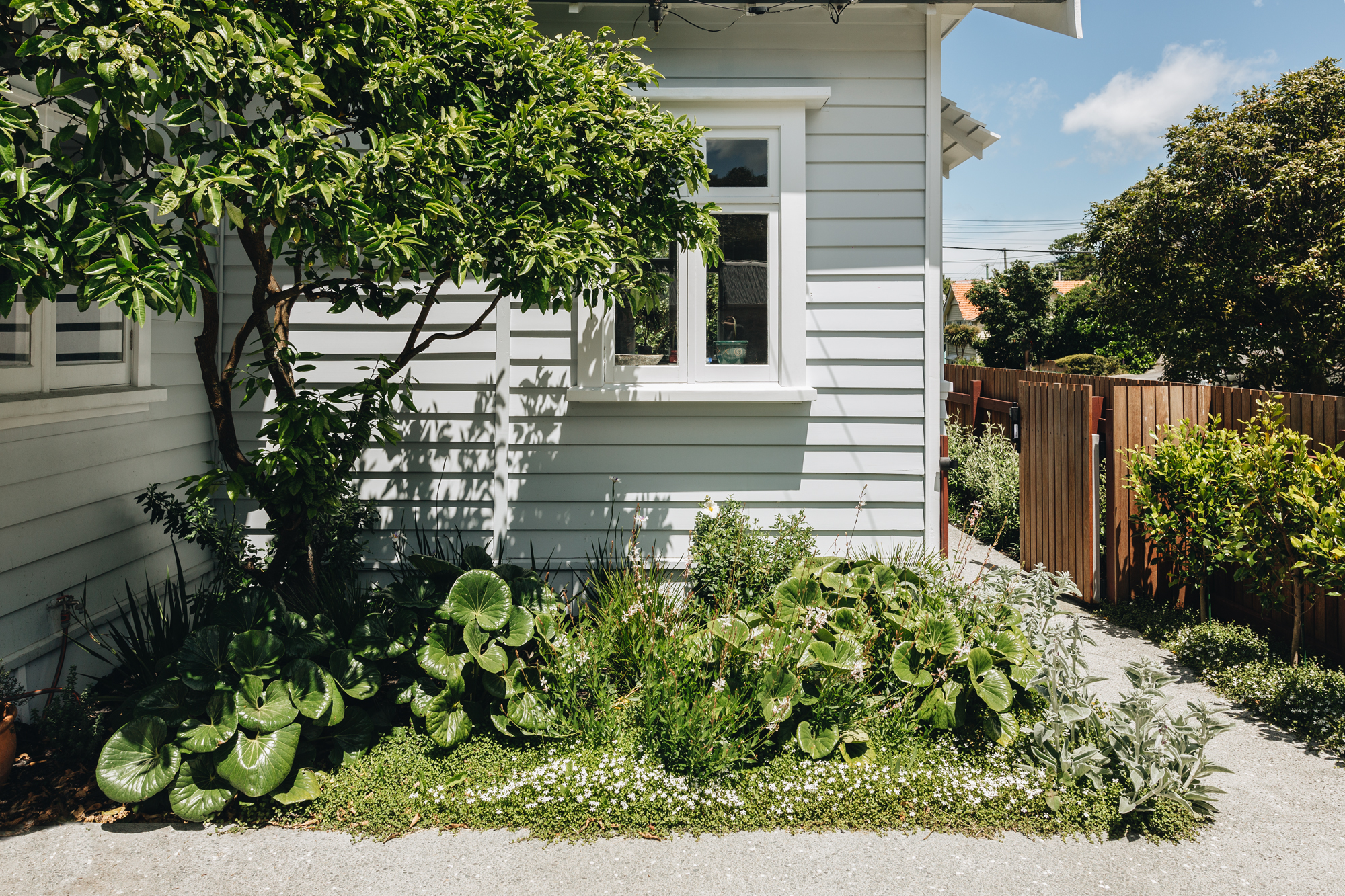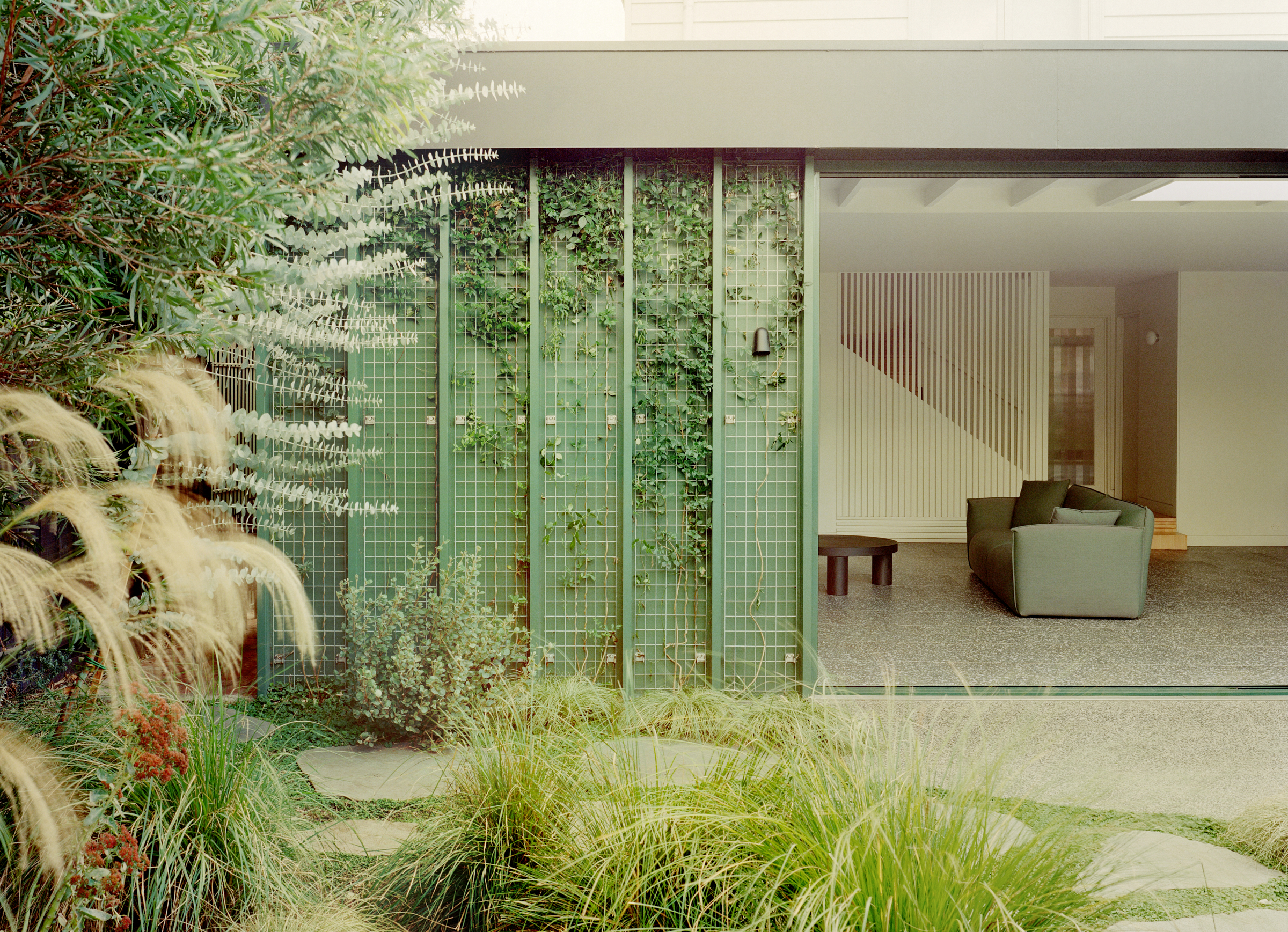The Sigridsminde Garden
Camilla Jørvad didn’t realise gardening was a big part of what she wanted to do with her life until she was already doing it.
Camilla Jørvad is a mother, photographer and passionate gardener based on the stunning Danish island of Ærø. Taking up gardening has taught her many lessons about life, health, harmony and the restoration of our precious planet.
Camilla shares with us her experience of the intertwining of gardening and the impact it’s had on her mental and physical health. As well as her family’s journey into creating a pocket of the world where all nature thrives — Sigridsminde.
[ Related reading | How to: Create a Wild “Cottage” Garden — Sigridsminde ]

Can you tell us a little about yourself and your life as a gardener, Camilla?
I’m a self-taught photographer who is deeply in love with and thoroughly dependent on gardening, as a close connection to nature and the changing seasons. I live with my husband, two children, and lots of animals on a hobby farm on the small Danish island, Ærø. I’m an introvert and the only thing I always need more of is alone-time. When possible, I find that time and peace of mind working in my garden. Gardening is an interest and passion that kind of snuck up on me. I didn’t realise it was a big part of what I wanted to do with my life until I was already doing it.
What significance does your home – Sigridsminde – have to your family?
Sigridsminde is at the centre of our family’s desire to live a slow thoughtful life in harmony with nature and the changing seasons, and being as self-sufficient as possible. Sigridsminde means ‘In memory of Sigrid’ – named after Sigrid who was a kind, childless woman who took in my father-in-law when he was very young and became like a mother to him. He went on to inherit the farm from her. From the very first day I met my now husband, I knew that this farmhouse was a non-negotiable part of the package. Luckily I have always known that I belong in the countryside and wanted my children to grow up in a place similar to where I grew up myself. Bringing out the farm’s full potential has become a shared dream for my husband and I. Every time we enter our driveway and see the wooden sign, it reminds us why we have chosen the life we have.
“Nature will always win so if you insist on battling it you will be a very unhappy and stressed gardener, and to me that is the opposite of the goal.”
What is your vision and philosophy for your property?
Since we took over from my parents-in-law in 2009, we have planted hundreds and hundreds of trees and shrubs. Bit by bit, we continue to transform pesticide-exhausted monoculture farmland into chemical-free woodland, wildlife corridors, flower meadows, hedgerows and wild garden areas where nature thrives. It is our hope that we can one day achieve this on all the land we own. But it wasn’t until I read Wilding: The Return of Nature to a British Farm by Isabella Tree last year that I realised what it was we were trying to create. That book should be mandatory reading in all schools. It gave my purpose and work here on the farm a new level of intentionality and direction. My hope is that living my life, gardening with nature and documenting and sharing that through photography, will someday be able to support my family and our life here fully.
What drew you to a slower, more seasonal lifestyle?
Although I always dreamed of living that way, my choices in life rarely reflected that. Eventually my body forced me to change my ways, and to align my values with my reality. For almost a decade, my work as a sought-after destination wedding photographer meant a life on the road, both here in Denmark and abroad. By the end of 2014, that life combined with mothering two small children alone for much of the year (my husband was a sailor at that point) and unresolved childhood trauma was a recipe for illness. Chronic stress and failing to listen to many signs my body was sending me, I fell into a six month long depression. My body simply gave up. I was done. I had to make drastic changes to what I ate, my bedtime, boundaries, my approach to work and my life in general. These are lessons I keep learning, and am by no means done with. The winter of 2018/19 was incredibly hard and I was pushed to the very edge of my existence, but with the help of an excellent therapist, a short period of medication, and a lot of inner work, I found my way back to life, to my kids, and to my purpose.
“Bit by bit, we continue to transform pesticide-exhausted monoculture farmland into chemical-free woodland, wildlife corridors, flower meadows, hedgerows and wild garden areas where nature thrives.”
How do you think creating and tending to a garden impacts our physical and mental health?
There are so many benefits. The physical are easy: Digging up old roots is an excellent workout! And growing your own nourishing veggies, fruits and berries automatically means a better diet. But it also means that your body is tired in the evening. Most of us who work desk jobs where our brains are stressed a lot of the time, but our bodies sit still. We feel exhausted but our bodies are just jittery or restless. After some real gardening my body is ready to rest at night. Movement and a good night’s sleep helps stabilise and normalise all the hormones influencing hunger, mood and more. It is my experience that the more nourishing and constructive things I do, the more good things I crave.
The garden is also the one place where I truly lose track of time, where my mind completely leaves the hamster wheel that is my never ending to-do list. But perhaps most importantly, considering the times we live in and my tendency to be highly sensitive to the depressing facts of climate change, speedy extinction of species, political turmoil, worldwide injustices, wars, nuclear threats, all of which feels utterly incomprehensible and too far out of my control and influence – we have a piece of land where I am the one who has the ultimate say in how things are done, where I can create very real and measurable progress in the direction I feel is right, and create a mini version of how I wish the whole world looked and functioned. It’s incredibly empowering and gives me a sense of direction and purpose that the constant flow of bad news never will.
What lessons have you learned along the journey of creating a garden?
In the very practical sense, I have learned that I don’t need a lawn at all. For some reason a lawn seems like a mandatory part of a garden. But we have chipped away at ours for years and now there is none left, only flowers and meadows with paths across. And the garden feels more fulfilling and alive than ever (plus I don’t have to sit on a noisy polluting monster of a mower for hours at a time every week, all summer long anymore!)
To loosen my grip and let go of “perfection”. My garden has taught me to be much less rigid. Nature will always win so if you insist on battling it you will be a very unhappy and stressed gardener, and to me that is the opposite of the goal. My garden has also taught me to love a wider range of plants, especially when it comes to colour. I used to hate, and I do mean HATE yellow, orange and red. Every single bloom in my garden for the first 5-6 years were pastel shades of blue, pink, white, and purple. I wanted everything to be a harmonious flowy sea of complimenting colours and I exercised harsh control to achieve that look. Slowly, as I cleaned up old baggage, chaos and tension on the inside of me, I started to embrace and see the incredible beauty of the stronger palettes too. In this growing season I have fully embraced contrasting colours and leave more planting combinations up to chance. I am ready to embrace “chaos” in my garden now because I no longer feel quite as chaotic inside.
Mixed varieties of dahlias dance in Camilla’s cut flower garden.
“We have a piece of land where I am the one who has the ultimate say in how things are done, where I can create very real and measurable progress in the direction I feel is right, and create a mini version of how I wish the whole world looked and functioned. It’s incredibly empowering and gives me a sense of direction and purpose.”
INTERVIEW: Emma Sage
PHOTOGRAPHY: Camilla Jørvad
























